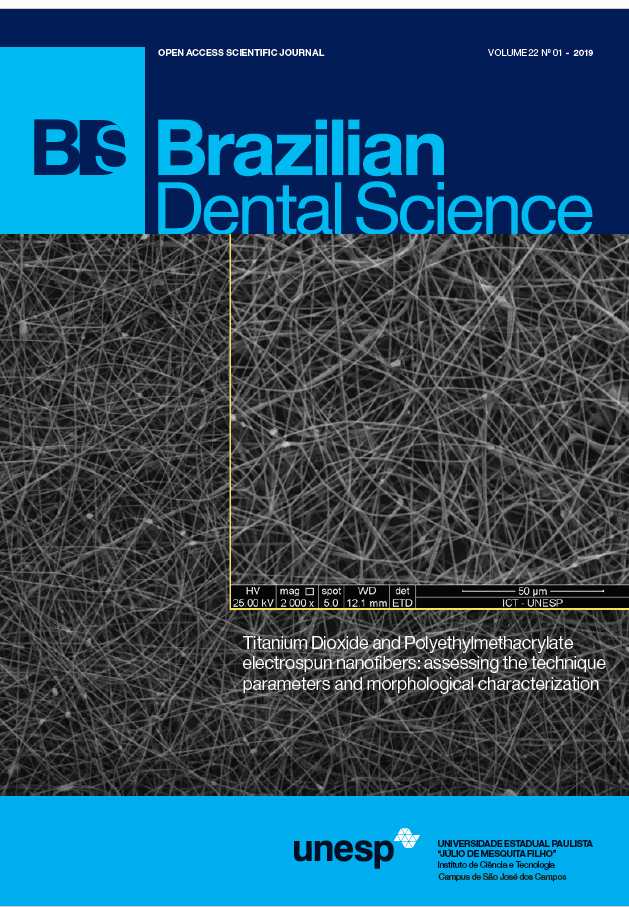The impact of at home and in-office bleaching agents on the color stability of bulk-fill composite resins
DOI:
https://doi.org/10.14295/bds.2019.v22i1.1675Resumo
Objective: This study compared different composites for color stability after exposure to at home and in-office bleaching gels. Material and Methods: Composite resin specimens (6mm diameterx2mm thickness) were manufactured according to the following groups (n=20): RC- Conventional; BF-Bulk Fill; RF-Flow; BFF-Bulk-Fill Flow. The surfaces were stained with coffee solution for 36hrs. A spectrophotometer was used to record the initial color (L*a*b*). Half of the specimens from each group underwent bleaching with 35% hydrogen peroxide (in-office) in three 45-minute applications. New color measurements were performed after 7, 14 and 21 days. The other half of the specimens underwent bleaching with 22% carbamide peroxide (at home) in 14 1-hour applications. Further color measurements were performed after 7 and 14 hours. For comparison between the color coordinates in different periods, ANOVA for repeated measures was applied (?=5%). The color variation (?E) was calculated for each group. Results: For in-office bleaching, there were no significant differences between the periods b* coordinate of the RF group, and for L* and b* coordinates of the BFF group. For at home bleaching the groups BF and BFF showed no differences for the L* coordinate. For the other coordinates, there was difference between the initial periods and after 14 days. The ?E variation presented higher values for the at home bleaching groups. For both whiteners the bulk-fill resins presented the greatest color variations. Conclusions: Bulk Fill resins do not guarantee greater color stability than the other composite resins tested, including conventional flow resin. The conventional composite resin showed the lower ?E.
Downloads
Downloads
Arquivos adicionais
Publicado
Como Citar
Edição
Seção
Licença
TRANSFERÊNCIA DE DIREITOS AUTORAIS E DECLARAÇÃO DE RESPONSABILIDADE
Toda a propriedade de direitos autorais do artigo "____________________________________________________________________" é transferido do autor(es) para a CIÊNCIA ODONTOLÓGICA BRASILEIRA, no caso do trabalho ser publicado. O artigo não foi publicado em outro lugar e não foi submetido simultaneamente para publicação em outra revista.
Vimos por meio deste, atestar que trabalho é original e não apresenta dados manipulados, fraude ou plágio. Fizemos contribuição científica significativa para o estudo e estamos cientes dos dados apresentados e de acordo com a versão final do artigo. Assumimos total responsabilidade pelos aspectos éticos do estudo.
Este texto deve ser impresso e assinado por todos os autores. A versão digitalizada deverá ser apresentada como arquivo suplementar durante o processo de submissão.




























